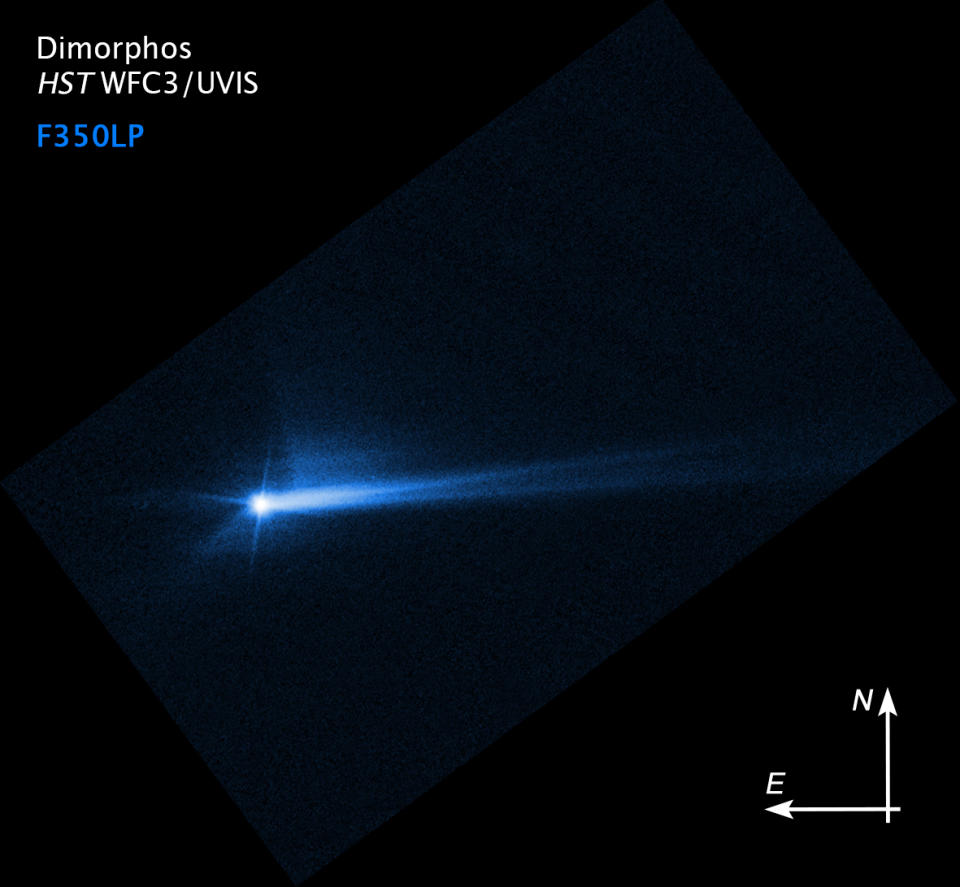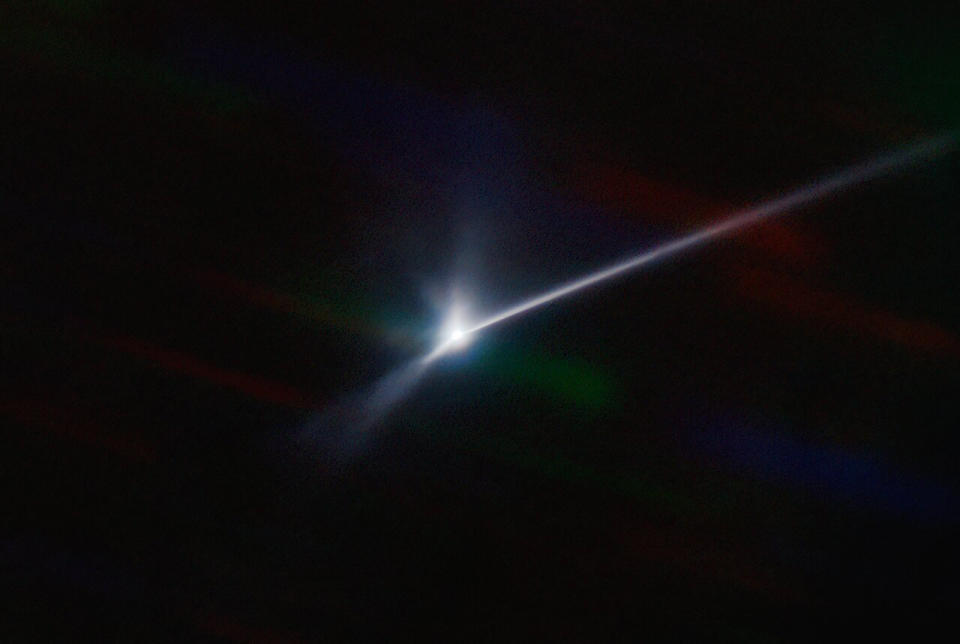NASA says it successfully changed asteroid’s path in test of planetary defense
A NASA spacecraft successfully changed an asteroid's orbit by intentionally smashing into it last month, agency officials confirmed Tuesday.
NASA said data obtained over the past two weeks showed that the DART probe's impact with a small, harmless space rock known as Dimorphos did manage to alter its trajectory.
The results of the cosmic collision are significant because it was the first real-life test of humanity's ability to protect the Earth from potentially catastrophic asteroids.
"All of us have a responsibility to protect our home planet," NASA Administrator Bill Nelson said in a statement. "After all, it's the only one we have."

The DART mission (short for Double Asteroid Redirection Test) was a rare chance to test a key planetary defense strategy, offering scientists an opportunity to assess whether "nudging" an asteroid can actually change its orbit. The maneuver's success suggests that with enough warning, asteroid deflection could be a viable way to save the Earth from a potentially devastating collision with a space rock.
"NASA has proven we are serious as a defender of the planet," Nelson said, adding that the mission was "a watershed moment for planetary defense and all of humanity."

The DART probe slammed into Dimorphos, which orbits a much larger asteroid named Didymos, on Sept. 26. The two space rocks are more than 6.5 million miles from Earth, and neither posed a threat to the planet before or after the DART mission.
Prior to the spacecraft's impact, it took Dimorphos 11 hours and 55 minutes to circle Didymos. Using ground-based telescopes on Earth, astronomers have now confirmed that the DART crash shortened Dimorphos' orbit by 32 minutes, to 11 hours and 23 minutes (with a margin of uncertainty of around plus or minus 2 minutes, according to NASA).
Lori Glaze, director of NASA's Planetary Science Division in Washington, said the finding is an important step toward understanding the full implications of the DART mission.
"As new data come in each day, astronomers will be able to better assess whether, and how, a mission like DART could be used in the future to help protect Earth from a collision with an asteroid if we ever discover one headed our way," Glaze said in a statement.
Astronomers are still studying the aftermath of the cosmic smash-up at observatories around the world. Researchers are focusing, in particular, on measuring how much energy or momentum was transferred between the two objects when the DART spacecraft flew head-on into Dimorphos at 14,000 mph. Scientists are also zeroing in on the many tons of rock and debris created by the impact, NASA officials said.
The DART spacecraft launched into space in November 2020. A future mission led by the European Space Agency will study the impact crater on the asteroid and examine Dimorphos and Didymos in greater detail.
This article was originally published on NBCNews.com

